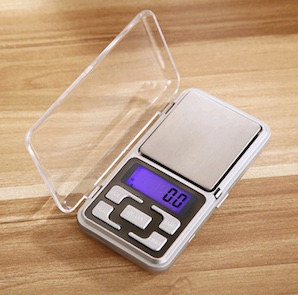
Curated with aloha by
Ted Mooney, P.E. RET

The authoritative public forum
for Metal Finishing 1989-2025

-----
Lincoln penny science project
I am right in the middle of my science project my experiment is leaving a penny in Coke, Diet Coke, Pepsi Twist and Cherry Coke. I've left the pennies there for three days and so far the only thing that has happened is that the diet coke has made a corrosion sort of ring around the penny. Does anyone out there know why this happened? Please help me for my project if due next week and I've done some searching and can not find out why this happened.
Angelica [last name deleted for privacy by Editor]- Ventura, California
2003
Hello Angelica. You've found that 3 days of immersion into these popular sodas doesn't do much to a penny. I doubt that your experiment provides enough evidence to state that Diet Coke is more corrosive than the others.
Pennies before 1982 were solid copper. 1983 and later pennies have a zinc core that is copper plated. Zinc is far more susceptible to corrosion than copper. My suspicion is that the copper coating has been breached on this particular penny and the diet coke is attacking the zinc core, whereas the other sodas haven't been able to get to the zinc yet.
I suggest that you make sure all of the pennies are 1983 or later, and have your mom or dad assist you in folding the pennies in half with pliers or a vice, or cutting them with tin snips to expose the zinc cores to the soda. Then I think you'll see some corrosion in 3 days.

Ted Mooney, P.E.
Striving to live Aloha
finishing.com - Pine Beach, New Jersey
2003
2003
Angelica,
The most useful part of "science" is that you can use it to prove or disprove something. Whereas what you're doing is more like just playing around. Look up what an experiment is. It's most powerful when you try to prove or disprove a statement.
That said, what you have done is put pennies into several common soft drinks. Each of these has phosphoric acid and other ingredients. Furthermore, when bottled or canned each of these has a lot of dissolved carbon dioxide, although if you have left them unsealed most of this has gone. The carbon dioxide also lowers the pH (makes the drinks more acid).
Were the pennies truly identical? A brand new penny has very little corrosion which means oxides and other compounds of copper have formed. There is also a little dirt. An older penny has much more corrosion film. Since this film has already undergone a chemical reaction, it may be less likely to continue to corrode, depending on the environment. Or it may flake off and be the source of your ring around the penny.
"Hands-on" learning is fun, maybe try a precision scale? . . .
"Hands-on" learning is fun, maybe try a ...
Precision Electronic Scale

on
eBay
or
Amazon
(affil links)
Were the pennies new or old? Pennies made during the past few years are a zinc core with a thin copper layer. As long as the copper is intact, the penny will act like an old penny. If you cut it with, say, sheet metal shears or a saw, the zinc will be exposed and form an electrical battery with the copper, and you'll probably get bubbling and rapid corrosion.
How do you know if changes have taken place? Visual inspection is one way, but weighing with a sensitive scale (often called a balance) can track very small changes, and can help you compare the pennies. But it's only really good information if you know how much each one weighed before and after. Pennies vary slightly between coins in weight.
I hope these comments will help you to decide what has happened and how to design your next experiment.

Paul Tibbals, P.E.
gas & electric
San Ramon, California, USA
(My opinions are not related to nor a statement of my employer's)
Hi, I'm in 5th grade and I'm in the middle of a science experiment, I have to find out if coins corrode more in salt or fresh water. I have conducted the experiment and found out that the quarter, dime and nickel corroded in the salt water but the penny corroded in the fresh water. I need to explain why the penny corroded in the fresh water instead of the salt water. I have searched the web with my parents and have been unable to find anything. This is due next week. Is there anyone who can help?
Jared A. [last name deleted for privacy by Editor]student - Clifton Park, New York
2006
Hi everyone, well I am a 14 year old student in the 8th grade and I have trouble with my science fair project. My topic is concerning the copper and zinc ratio in pennies, as to whether a pre-1982 penny will corrode faster or slower than a post-1983 penny. I have left the pennies for about a week and a half and I have seen very little change in a saturated NaCl solution. I need help because I thought they would have corroded by now. Can someone guide me good research sources for this project, or which pennies are supposed to corrode faster and maybe why? Please, appreciate any help
Jonathan W. [last name deleted for privacy by Editor]Student - La Jolla, California, United States
2006
We put a penny in a Coke and Diet Coke and Sprite, the Coke and Sprite have a much darker appearance and the diet coke isn't as bad. Is it the sugar that made the pennies darker?
Let us know, we have a 5th grade experiment due soon.
Thanks
mother - Sunnyvale, California
January 31, 2008
A problem with the internet that no one talks about, students, is that there are so many millions of pages that we all find ourselves forced to rapidly bounce from page to page without really reading anything. It's a systematically reinforced bad habit of being careful to bounce fast and learn nothing :-)
But now that you've landed on this page, there's good info here, especially in Paul Tibbals' reply. You have all have made observations, but you don't yet have enough data to hazard a conclusion. You need to make sure all pennies are pre-1982 or post 1983 so they are made of the same material; you need to make sure they are in the same condition before immersion; you need to repeat the experiment several times; and you need to try several other sugar-free sodas before you are ready to say that your observation was anything beyond a random fluke. Good luck!

Ted Mooney, P.E.
Striving to live Aloha
finishing.com - Pine Beach, New Jersey
February 1, 2008
I put pennies into lemonade, fruit punch and tap water. the lemonade seems to make the penny shinier, but the fruit punch made a black ring around the penny. the tap water made the penny browner. Why does this happen? Answer soon because my project is due soon.
Robert L. [last name deleted for privacy by Editor]Student - New York
January 3, 2009
Hi my name is Sandra and my 5th grade daughter is doing a science experiment on which juice cleans copper best. We had a written rough draft report due on the 7th of January. The teacher graded and make comments on draft. One of the comments was did not put info on who discovered the chemical reaction between copper and juice. Please help we could not find answer.
Sandra C. [last name deleted for privacy by Editor]students mom - California
January 8, 2009
Hi, Robert. In my own estimation, the important thing is not why; the important thing is to learn the method. Please see our FAQ "What Liquid Cleans Pennies Best" and it will explain all. Good luck with your project.
Hello, Sandra. Is that a direct quote from the teacher? I don't think so, because it doesn't make any sense to me. American peoples like the Incas and Aztecs discovered the far more exacting process of surface enrichment of copper-gold alloys long before America was discovered, and the Chinese were familiar with it, as well as the ancients. Remember that the bronze age (working with copper and alloys of copper) precedes the iron age! I am 100 percent confident that the discovery that acidic juices have an effect on copper predates writing or any other way of knowing "who discovered it" :-)
Regards,

Ted Mooney, P.E.
Striving to live Aloha
finishing.com - Pine Beach, New Jersey
January 24, 2009
does coke really make a penny dissolve?
Paige m [last name deleted for privacy by Editor]- talking rock Georgia
September 7, 2009
September 8, 2009
Hi, Paige. Read the page, and do the experiment as described in the 1st answer on this page. Then you'll know, and you won't have to guess or take the word of an unknown stranger.
Regards,

Ted Mooney, P.E.
Striving to live Aloha
finishing.com - Pine Beach, New Jersey
Q, A, or Comment on THIS thread -or- Start a NEW Thread